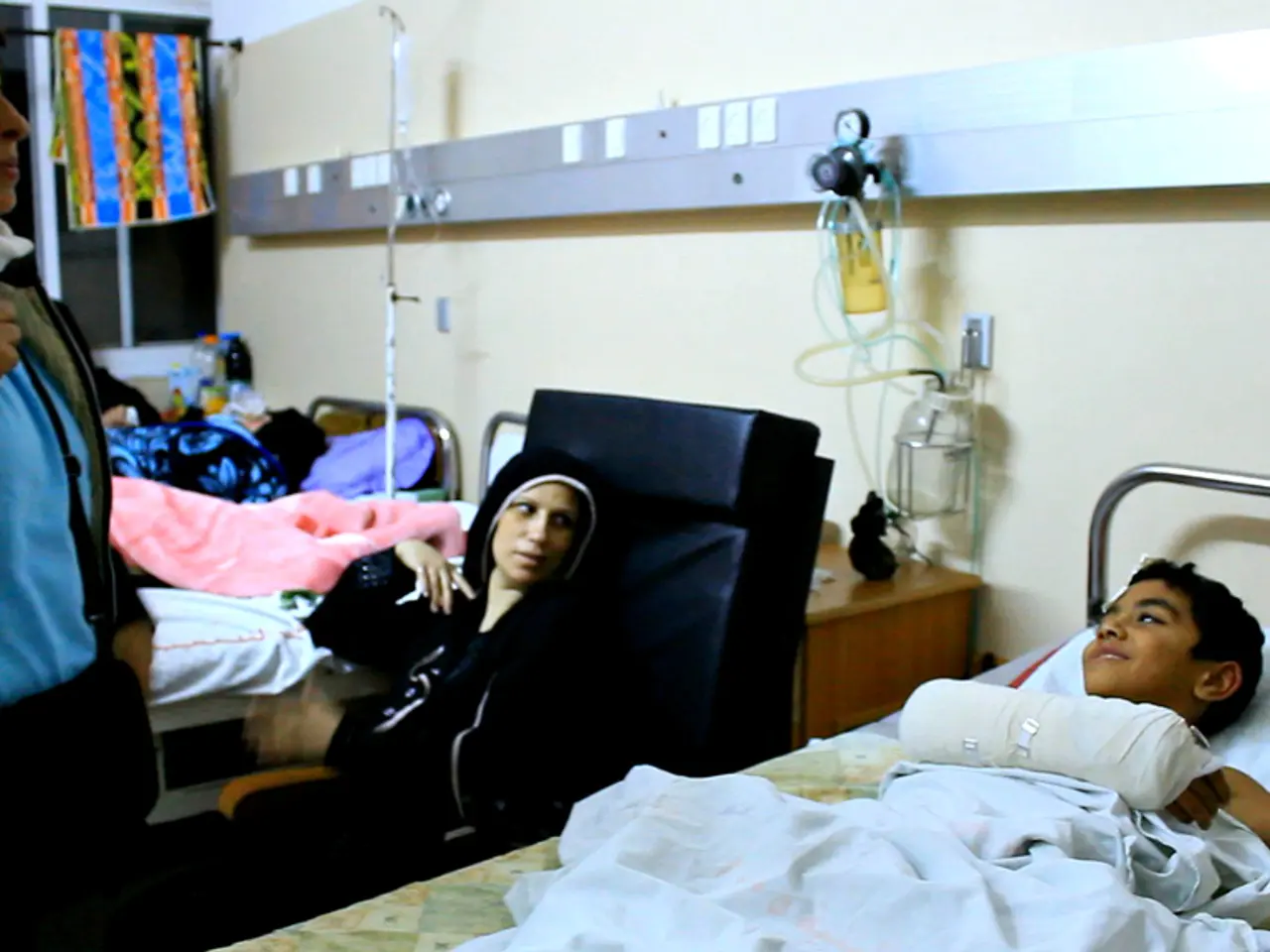Analyzing Medical Information Through Infographics to Improve Lives and Health Outcomes
In the rapidly evolving world of healthcare, data visualization has emerged as a powerful tool for making informed decisions. This technique, which involves representing complex data in a visual format, has proven to be a game-changer for healthcare leaders, researchers, and policymakers alike.
According to healthdata.org, a staggering 90% of locations imposed mask-wearing mandates when daily deaths reached eight per million. This statistic underscores the importance of data-driven decision-making in public health crises, such as the ongoing COVID-19 pandemic.
Healthcare stakeholders, including Canadian scientists, leverage tools like Infogram to create interactive charts and maps, visualizing data related to cancer research. By doing so, they can identify areas where research is most needed, such as breast cancer, colorectal cancer, lung cancer, and prostate cancer.
The benefits of using data visualization in healthcare decision-making are manifold. First and foremost, it improves the comprehension of complex data, making it easier for healthcare leaders to understand patient performance, scheduling, staffing, and financial data through visual formats like charts, dashboards, and heat maps.
Moreover, data visualization facilitates faster and more informed decision-making due to real-time or recent data visualization. This feature enables administrators to adjust operations such as staffing levels, appointment scheduling, and patient access efficiently.
Data visualization also aids in the identification of patterns and trends. For instance, it can help spot patient access problems or workflow inefficiencies that might be difficult to see in raw data but become clear when visualized.
Enhanced communication and collaboration among healthcare stakeholders is another significant advantage of data visualization. By presenting data in easy-to-understand graphics, it enables better engagement and consensus during decision-making processes.
Lastly, data visualization supports better resource optimization and workflow management. By monitoring key performance indicators (KPIs) like physician productivity, patient wait times, and appointment availability, it leads to improved patient care and operational efficiency.
During the COVID-19 pandemic, data visualization tools have been instrumental in tracking the numbers of cases and deaths. For example, visualizations have helped the public understand how much more dangerous COVID-19 is compared to the flu.
In the United States, over half a million deaths from COVID-19 have occurred, according to Johns Hopkins University Coronavirus Center. The beginning of the year has typically seen the largest numbers of inpatient stays, deaths, and emergency department visits.
Public health data visualization has also played a crucial role in informing public health officials, helping them decide when to enforce health mandates. For instance, non-metro areas have often had substantially higher occupancy in their ICU beds due to COVID-19.
Tools like Google Charts, Tableau, Chartblocks, and our platform have been used to create informative charts and visuals that describe data in real-time. Healthcare companies like Domo have also leveraged these tools to gain insights into their operations and make informed decisions.
In conclusion, data visualization in healthcare supports quicker, clearer, and more effective decisions by translating complex datasets into actionable insights, thereby improving both clinical and administrative outcomes. As we continue to navigate the challenges of the COVID-19 pandemic and beyond, the importance of data visualization in healthcare decision-making cannot be overstated.
- The infographic maker Infogram is utilized by Canadian scientists to visualize data related to cancer research.
- Data visualization helps identify areas where research is most needed in the field of cancer, such as breast, colorectal, lung, and prostate cancer.
- Improved comprehension of complex data is one of the benefits of using data visualization in healthcare.
- Data visualization makes understanding patient performance, scheduling, staffing, and financial data easier through visual formats like charts, dashboards, and heat maps.
- Data visualization facilitates faster and more informed decision-making due to real-time or recent data visualization.
- In healthcare, data visualization enables administrators to adjust operations such as staffing levels, appointment scheduling, and patient access efficiently.
- Data visualization aids in the identification of patterns and trends, such as spotting patient access problems or workflow inefficiencies.
- Enhanced communication and collaboration among healthcare stakeholders is a significant advantage of data visualization.
- Data visualization supports better resource optimization and workflow management through monitoring key performance indicators like physician productivity, patient wait times, and appointment availability.
- During the COVID-19 pandemic, data visualization tools have been essential for tracking the numbers of cases and deaths.
- Visualizations have helped the public understand how much more dangerous COVID-19 is compared to the flu.
- Over half a million deaths from COVID-19 have occurred in the United States, according to Johns Hopkins University Coronavirus Center.
- The beginning of the year has typically seen the largest numbers of inpatient stays, deaths, and emergency department visits due to COVID-19.
- Public health data visualization has played a crucial role in helping public health officials decide when to enforce health mandates.
- Non-metro areas have often had substantially higher occupancy in their ICU beds due to COVID-19.
- Tools like Google Charts, Tableau, Chartblocks, and our platform have been used to create informative charts and visuals that describe data in real-time.
- Healthcare companies like Domo have also leveraged these tools to gain insights into their operations and make informed decisions.
- Data visualization translates complex datasets into actionable insights, thereby improving both clinical and administrative outcomes.
- Data-driven decision-making is essential during public health crises, as demonstrated by the 90% of locations that imposed mask-wearing mandates when daily deaths reached eight per million.
- In the rapidly evolving world of healthcare, data visualization has emerged as a game-changer for healthcare leaders, researchers, and policymakers.
- In addition to cancer research, data visualization is also used to study chronic diseases, respiratory conditions, digestive health, eye health, hearing, and neurological disorders.
- The healthcare industry is investing in mental health, with data visualization tools being used to track and monitor mental health trends and treatments.
- Men's health, skin care, and therapies and treatments are other areas where data visualization is making a significant impact in the healthcare industry.
- Data visualization is also being applied to areas like nutrition, aging, and women's health.
- In the field of cardiovascular health, data visualization is being used to track heart disease risk factors and to monitor treatments and interventions.
- Autoimmune disorders, such as lupus and rheumatoid arthritis, are another area where data visualization is helping to improve diagnosis and treatment.
- CBD, a popular supplement for managing anxiety and pain, is also being studied using data visualization.
- In a broader sense, data visualization is essential for all aspects of health and wellness, including fitness and exercise, lifestyle, relationships, pets, travel, cars, education and self-development, personal growth, career development, and even in entertainment industries like casino-and-gambling, casino-games, lotteries, and sports.





